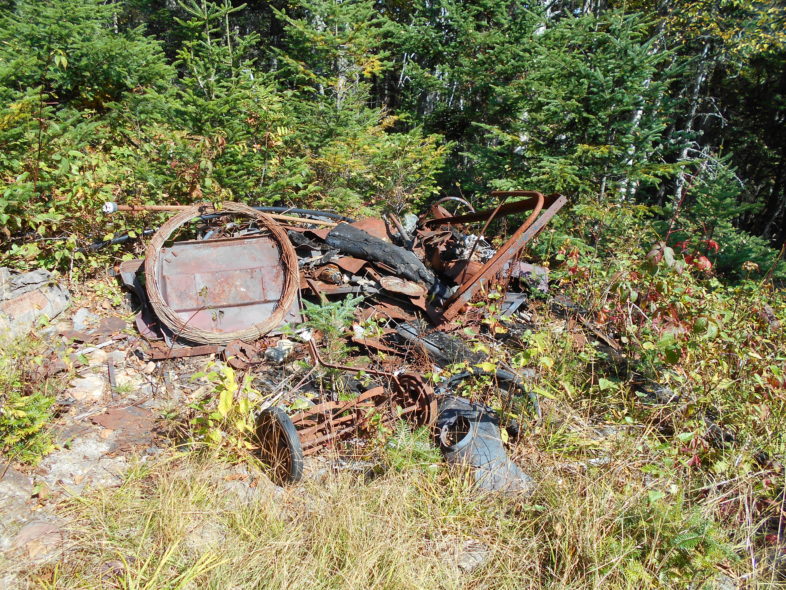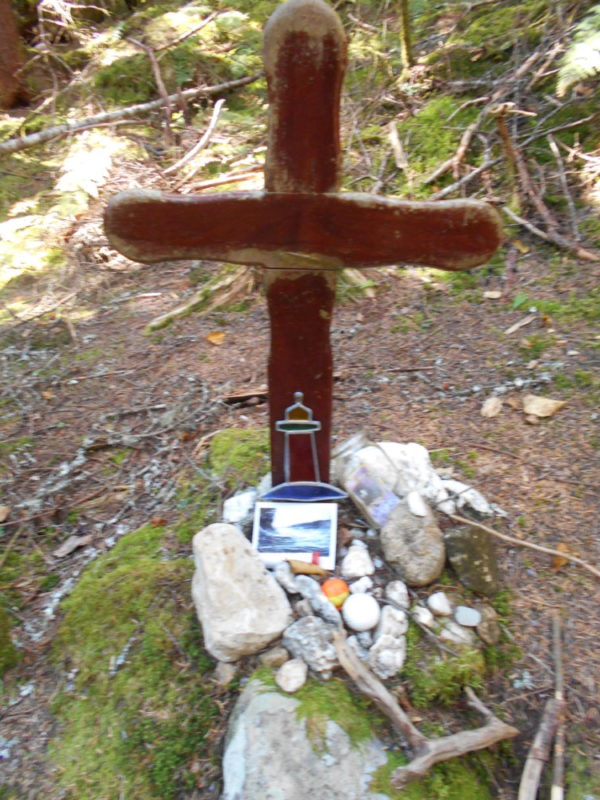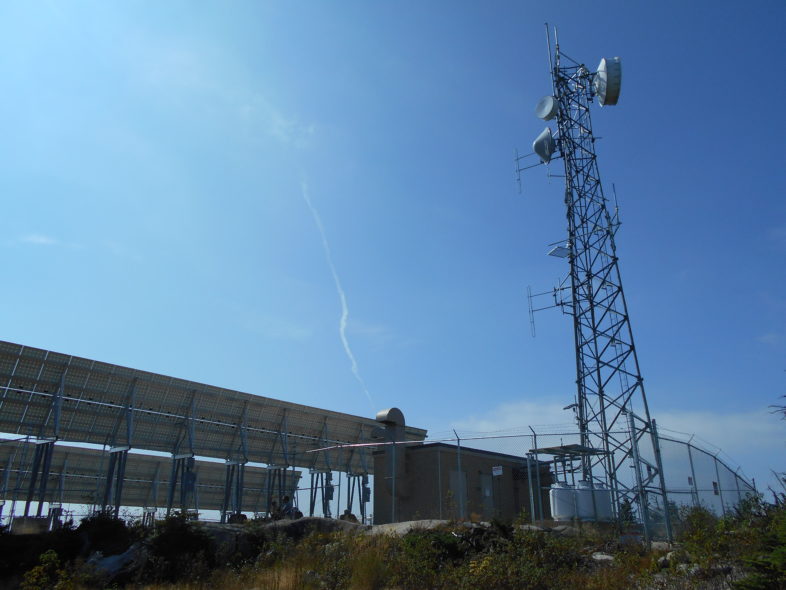By Mike Zimmermann
Recently I got to thinking about my first Mountain Birdwatch (MBW) survey route. It was on Maine’s West Kennebago Mt., which I only surveyed from 2007-2009 before the route was discontinued when MBW was revised in 2010. I hadn’t been back there until this past September, when I was inspired to revisit the mountain after reading VCE’s State of the Mountain Birds report, and the paper, A fine-scale U.S. population estimate of a montane spruce–fir bird species of conservation concern, by Jason Hill and John Lloyd.

Remnants at the site of an old fire warden’s cabin on West Kennebago Mt., Maine. (Photo by Mike Zimmermann)
The first survey point on West Kennebago was at the site of the fire warden’s cabin. Back then the Maine Forest Service had just “removed” the cabin (by burning it down) to prevent vandalism. I remembered that it was eerie sitting there in the pre-dawn darkness with the smell of burnt wood and melted roofing occasionally wafting in the still air. The original MBW protocol included using a cassette tape playback of a Bicknell’s Thrush song and call in an attempt to illicit a response, if at the end of the allotted survey period no Bicknell’s had been detected. I had to play that tape at this first point and got no response. The many times afterwards that I played that tape I always got the same disappointing result.

A small memorial on the West Kennebago Mt. Trail has accumulated a variety of mementos over the years. (Photo by Mike Zimmermann)
Part-way to the second point, a simple cross had been placed alongside the trail, and I always wondered whom it memorialized. I was surprised to find it still there all these years later, along with a variety of whimsical items that had been placed beside it—a cigar tube, a bobber, a lighthouse ornament, a golf ball, a broken pickle jar, and a Polaroid photograph that had yet to be ruined by rain. Someone still remembers.
Further up the trail, at the fourth point, sits a helicopter landing platform. I remember thinking that this human intrusion would surely drive any wild birds away. But it was here that I saw my first Bicknell’s Thrush. I initially heard it sing off to the side in a patch of stunted fir trees, and then it conveniently landed in the trail about twenty feet below me. I enjoyed such a feeling of excited accomplishment that I immediately became completely hooked on doing MBW surveys for evermore!
Ten years ago, the old fire tower stood on the summit. One had to climb the tower to get a view above the trees. I heard it was removed in 2012, and the summit cleared to make way for a new communications tower, two large solar arrays, and a small building to house the batteries. Seeing it now, I was struck at how our “needs” can bring such dramatic change to the landscape. I didn’t encounter any thrushes on this late September afternoon visit. Maybe they’d been driven away, but maybe not. So next year I will return…in June, and early in the morning…and I will listen.

The summit of West Kennebago now supports a communication tower, small solar array, and structure, forever changing the view and habitat. (Photo by Mike Zimmermann)
Mike Zimmermann is an avid hiker and diehard Mountain Birdwatch volunteer. In the last 12 years, Mike has completed 43 MBW surveys, for which he was awarded VCE’s Julie Nicholson Citizen Science Award in 2016. A retired rural letter-carrier for the U.S. Postal Service, he and his wife Barbara live in the woods on a tidal cove in Maine.
